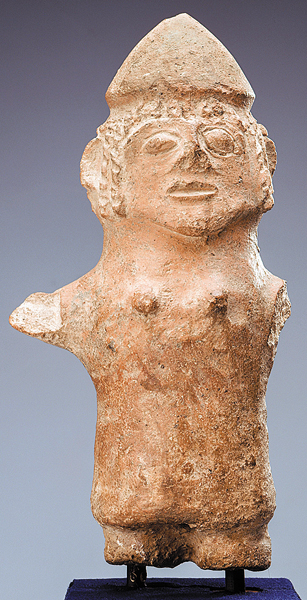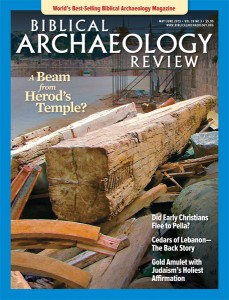
A. Assyrian garden gnome
B. Phoenician children’s toy
C. Edomite musical instrument
D. Hittite yarn spool
E. Head from Philistine scepter
Answer: (C) Edomite musical instrument
This nearly 13-inch-tall clay female figurine was actually played as a rattle. Inside the hollow figure are tiny pieces of shell and a small round pellet that, when shaken, produce a percussive rattling that sounds from a small opening below the figure’s torso. Known throughout the Near East, rattles and rattle-like instruments such as the sistrum were a regular feature of ritual and ceremonial processions, including the lively parade that followed David when he moved the Ark of the Covenant to Jerusalem (2 Samuel 6:5).
The unprovenanced rattle, which was obtained by famous archaeologist Nelson Glueck during one of his many expeditions to Transjordan, has features similar to cultic figurines and vessels excavated from Iron Age Edomite sites in the Negev.a The figure’s overall cylindrical form, together with its incised almond-shaped eyes, sharply pointed chin, braided hair and conical cap, all point to an Edomite origin. Although little is known of Edomite religion, many of the cultic figures found in the Negev are associated with instruments, suggesting music featured prominently in their ritual ceremonies.
Already a library member? Log in here.
Institution user? Log in with your IP address.

